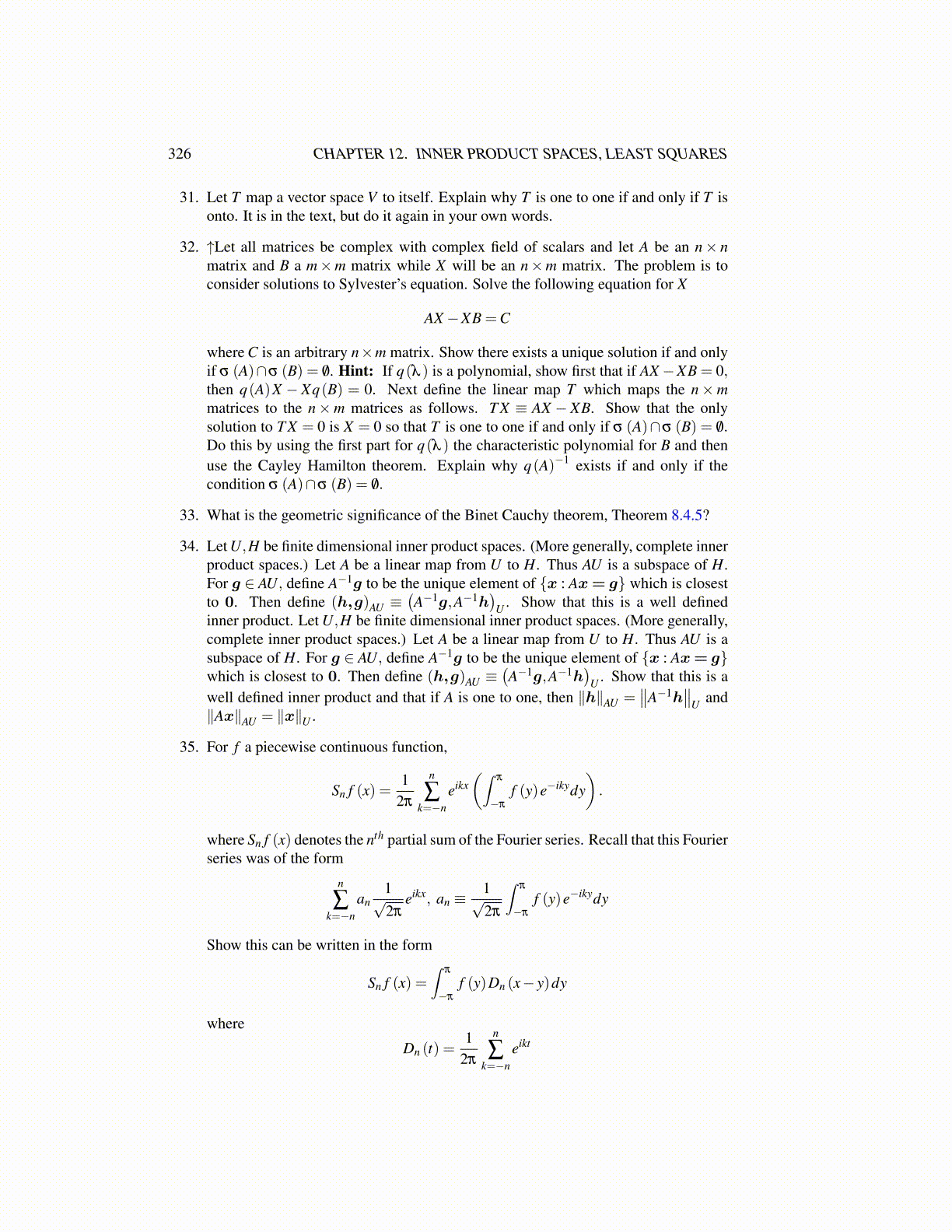
326 CHAPTER 12. INNER PRODUCT SPACES, LEAST SQUARES
31. Let T map a vector space V to itself. Explain why T is one to one if and only if T isonto. It is in the text, but do it again in your own words.
32. ↑Let all matrices be complex with complex field of scalars and let A be an n× nmatrix and B a m×m matrix while X will be an n×m matrix. The problem is toconsider solutions to Sylvester’s equation. Solve the following equation for X
AX−XB =C
where C is an arbitrary n×m matrix. Show there exists a unique solution if and onlyif σ (A)∩σ (B) = /0. Hint: If q(λ ) is a polynomial, show first that if AX−XB = 0,then q(A)X − Xq(B) = 0. Next define the linear map T which maps the n×mmatrices to the n×m matrices as follows. T X ≡ AX − XB. Show that the onlysolution to T X = 0 is X = 0 so that T is one to one if and only if σ (A)∩σ (B) = /0.Do this by using the first part for q(λ ) the characteristic polynomial for B and thenuse the Cayley Hamilton theorem. Explain why q(A)−1 exists if and only if thecondition σ (A)∩σ (B) = /0.
33. What is the geometric significance of the Binet Cauchy theorem, Theorem 8.4.5?
34. Let U,H be finite dimensional inner product spaces. (More generally, complete innerproduct spaces.) Let A be a linear map from U to H. Thus AU is a subspace of H.For g ∈ AU, define A−1g to be the unique element of {x : Ax= g} which is closestto 0. Then define (h,g)AU ≡
(A−1g,A−1h
)U . Show that this is a well defined
inner product. Let U,H be finite dimensional inner product spaces. (More generally,complete inner product spaces.) Let A be a linear map from U to H. Thus AU is asubspace of H. For g ∈ AU, define A−1g to be the unique element of {x : Ax= g}which is closest to 0. Then define (h,g)AU ≡
(A−1g,A−1h
)U . Show that this is a
well defined inner product and that if A is one to one, then ∥h∥AU =∥∥A−1h
∥∥U and
∥Ax∥AU = ∥x∥U .
35. For f a piecewise continuous function,
Sn f (x) =1
2π
n
∑k=−n
eikx(∫
π
−π
f (y)e−ikydy).
where Sn f (x) denotes the nth partial sum of the Fourier series. Recall that this Fourierseries was of the form
n
∑k=−n
an1√2π
eikx, an ≡1√2π
∫π
−π
f (y)e−ikydy
Show this can be written in the form
Sn f (x) =∫
π
−π
f (y)Dn (x− y)dy
where
Dn (t) =1
2π
n
∑k=−n
eikt